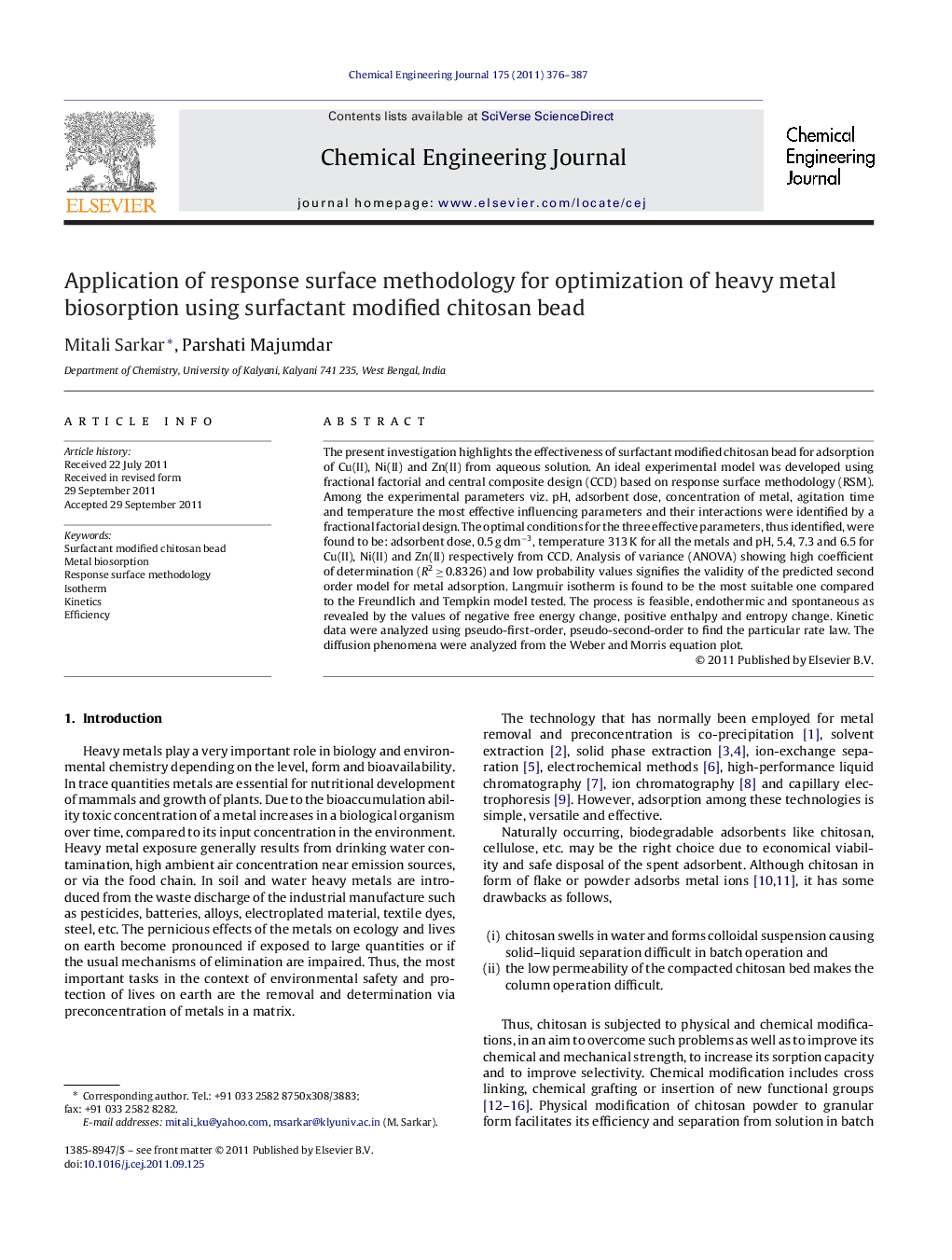| کد مقاله | کد نشریه | سال انتشار | مقاله انگلیسی | نسخه تمام متن |
|---|---|---|---|---|
| 150994 | 456460 | 2011 | 12 صفحه PDF | دانلود رایگان |

The present investigation highlights the effectiveness of surfactant modified chitosan bead for adsorption of Cu(II), Ni(II) and Zn(II) from aqueous solution. An ideal experimental model was developed using fractional factorial and central composite design (CCD) based on response surface methodology (RSM). Among the experimental parameters viz. pH, adsorbent dose, concentration of metal, agitation time and temperature the most effective influencing parameters and their interactions were identified by a fractional factorial design. The optimal conditions for the three effective parameters, thus identified, were found to be: adsorbent dose, 0.5 g dm−3, temperature 313 K for all the metals and pH, 5.4, 7.3 and 6.5 for Cu(II), Ni(II) and Zn(II) respectively from CCD. Analysis of variance (ANOVA) showing high coefficient of determination (R2 ≥ 0.8326) and low probability values signifies the validity of the predicted second order model for metal adsorption. Langmuir isotherm is found to be the most suitable one compared to the Freundlich and Tempkin model tested. The process is feasible, endothermic and spontaneous as revealed by the values of negative free energy change, positive enthalpy and entropy change. Kinetic data were analyzed using pseudo-first-order, pseudo-second-order to find the particular rate law. The diffusion phenomena were analyzed from the Weber and Morris equation plot.
Figure optionsDownload as PowerPoint slideHighlights
► A novel surfactant modified chitosan bead was synthesized for adsorption of Cu(II), Ni(II) and Zn(II) from aqueous solution.
► The interactive influences of all the operational variables were optimized by RSM, a multivariable statistical design.
► The feasibility of the process was evaluated from the suitable isotherm and thermodynamic parameters.
► The kinetic study was made to identify the particular rate law and characterize the diffusion process.
Journal: Chemical Engineering Journal - Volume 175, 15 November 2011, Pages 376–387